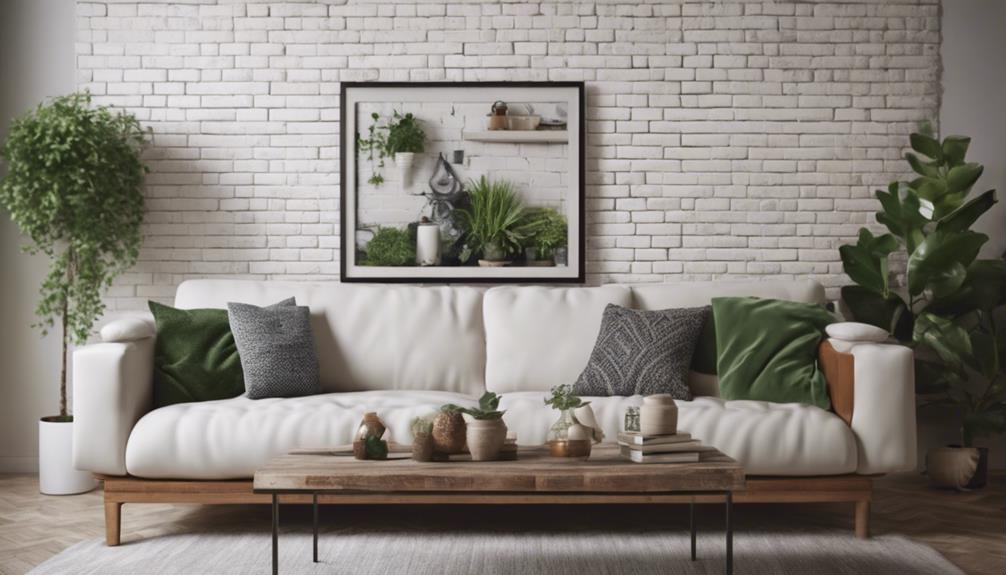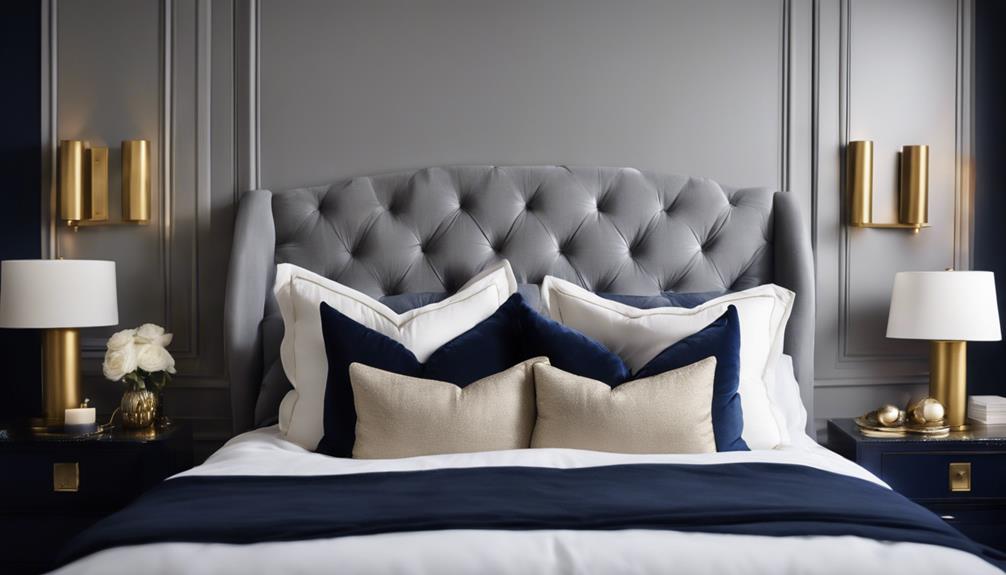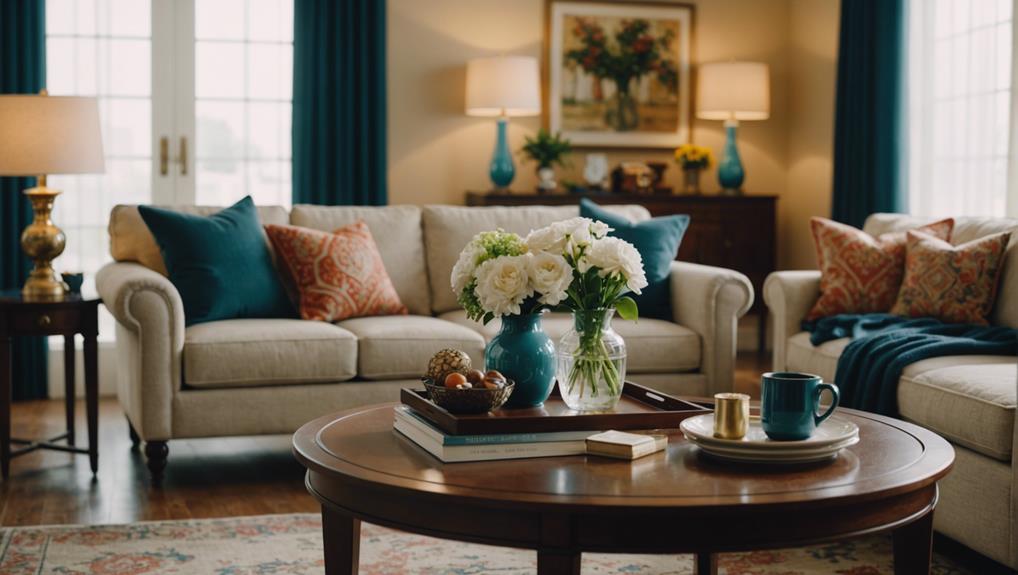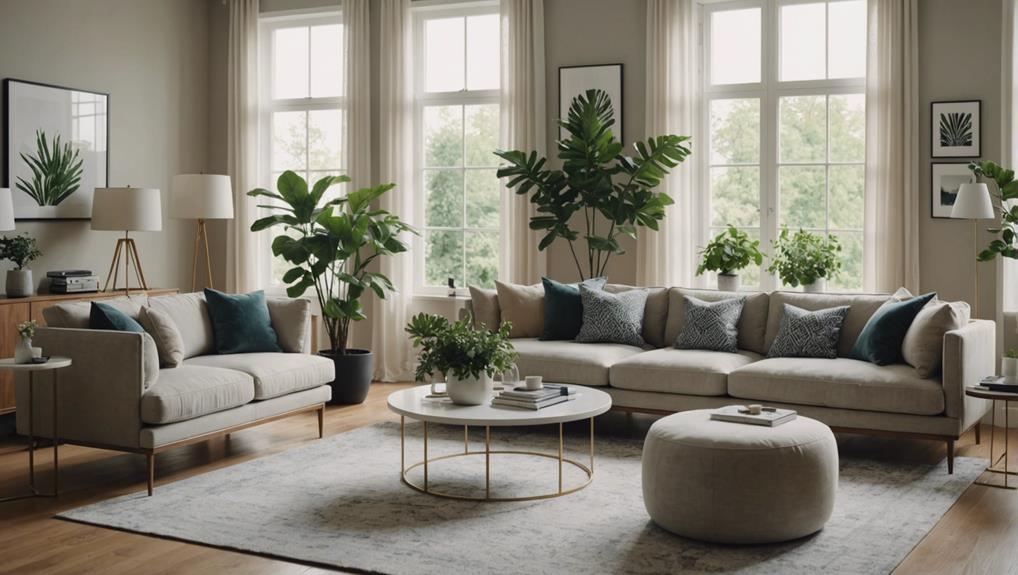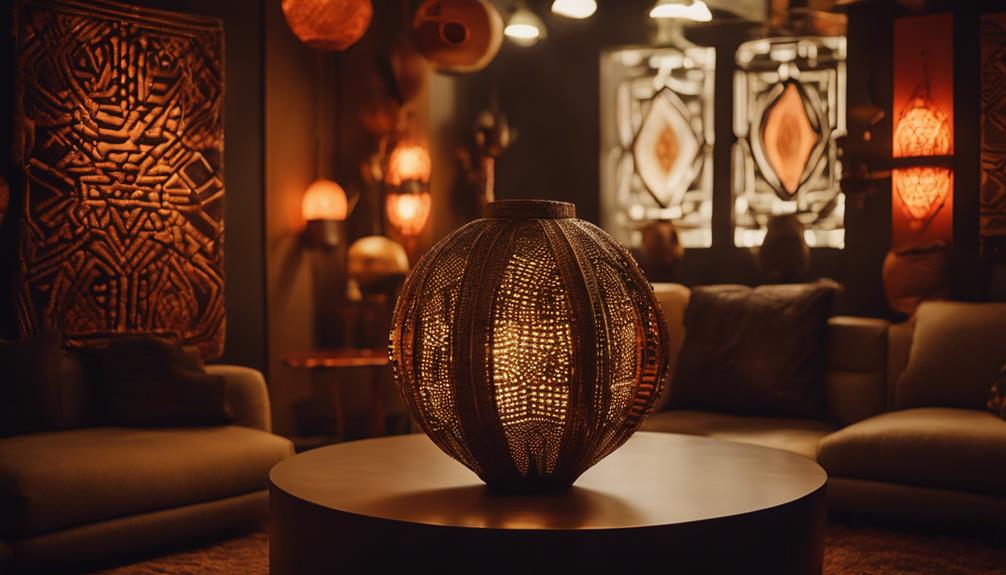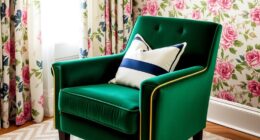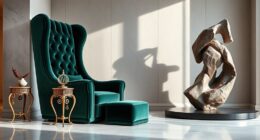You've got a blank canvas with your white brick wall, and now it's time to get creative! Consider a monochromatic chic look with matching white furniture and decor, or bring in some natural beauty with botanical prints and earth tones. Industrial chic is also an option, with metal accents adding depth and contrast. For a softer vibe, try pairing soft pastel hues with your white brick wall, or add some vintage charm with distressed frame displays and rustic wooden accents. Want more ideas? Explore greenery and brick fusion, bold color blocking, and elegant decor ideas to take your space to the next level.
Key Takeaways
• Incorporate texture with white brick walls and complement with white furniture, decor, and textiles for a clean, modern look.
• Add a natural touch with botanical prints, earth tones, and nature-inspired decor elements for a soothing atmosphere.
• Mix industrial chic with metal accents, shelving units, and lighting fixtures against white brick walls for a dynamic design.
• Soothe the senses with soft pastel hues that enhance the light, airy feel of white brick walls, creating a calming oasis.
• Create a unique look by pairing white brick walls with bold color blocking, vintage decor, or lush greenery for a visually appealing contrast.
Monochromatic Chic With White Brick
By embracing a monochromatic color scheme, you can create a clean and modern look with white brick walls as the focal point. This chic aesthetic is achieved by using a single color scheme, like all white, to create a cohesive and harmonious atmosphere.
To prevent the space from feeling flat or boring, incorporate texture with white brick walls, adding depth and visual interest to your monochromatic design. By using varying shades of white, you can create a sense of depth and visual interest in your white brick wall decor.
In a monochromatic space, white furniture, decor, and textiles will complement your white brick walls perfectly, creating a cohesive look that exudes modern design. The beauty of monochromatic chic with white brick walls lies in its versatility, allowing you to easily integrate different styles and accents for a timeless design.
With a monochromatic color scheme, you can focus on the texture and beauty of your white brick walls, creating a clean and modern space that's both stylish and sophisticated.
Nature-Inspired Accent Walls
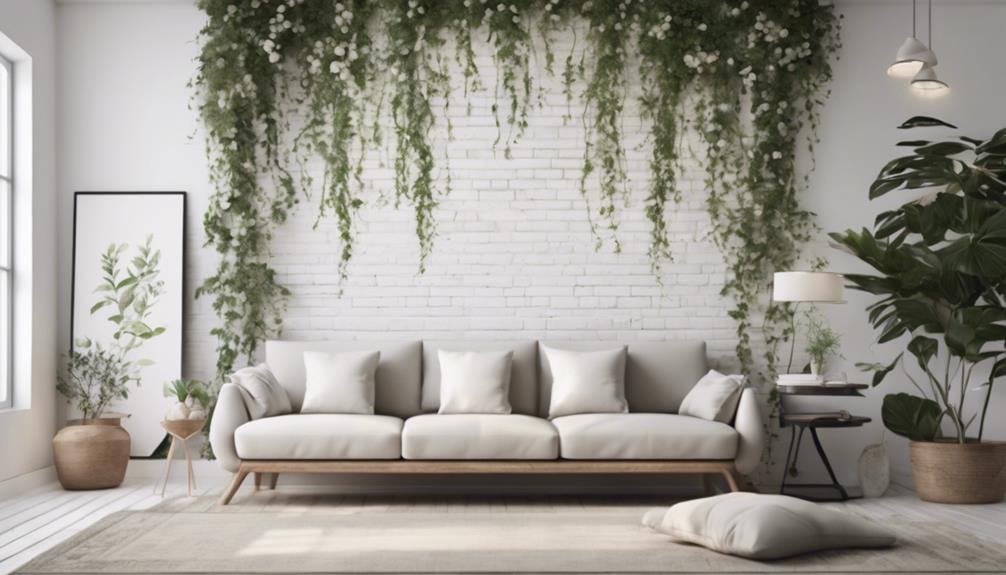
As you explore the world of nature-inspired accent walls, you'll find that incorporating elements like botanical prints and earth tones can instantly evoke a sense of serenity and connection to the outdoors.
By combining these elements with your white brick wall, you'll create a harmonious blend of natural and industrial elements that's both visually striking and calming.
Botanical Prints Galore
What's the easiest way to infuse your white brick wall with a dose of natural beauty, and instantly elevate your space's ambiance? The answer lies in botanical prints! These stunning additions can transform your white brick wall into a nature-inspired accent wall that exudes freshness and serenity.
To create a vibrant and diverse look, incorporate a variety of botanical prints featuring:
- Delicate leaves that add a touch of subtlety to your space
- Vibrant flowers that burst with color and energy
- Tropical motifs that transport you to a lush paradise
- Wild botanicals that bring an air of whimsy to your decor
Earth Tones Unite
Unifying your white brick wall with earth tones creates a soothing atmosphere, and you can effortlessly achieve this by incorporating greens, browns, and blues into your decor. These natural hues complement the white brick beautifully, creating a calming ambiance that invites relaxation.
To enhance the earthy feel, incorporate nature-inspired decor elements like plants, wood furniture, and rattan accessories. You can also use earth tones in textiles such as throw pillows, rugs, and curtains to tie the room together with the white brick accent wall. The result is a harmonious balance that creates a cozy and inviting atmosphere in the space.
To further enhance the earthy and organic theme, consider adding nature-inspired artwork or photography to the white brick wall. By doing so, you'll create a space that feels connected to nature, perfect for unwinding and recharging.
Industrial Chic With Metal Accents
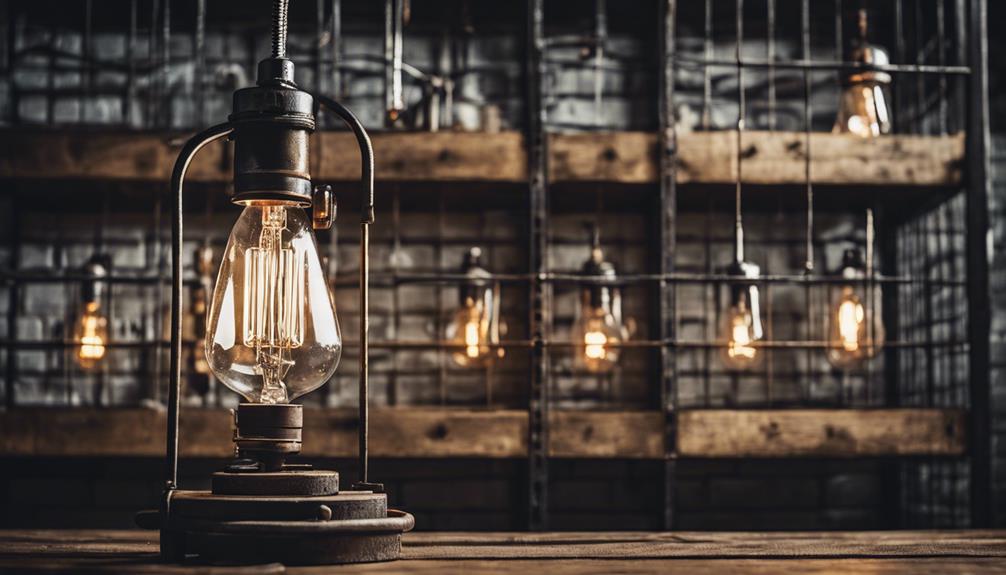
You can instantly elevate your white brick wall decor by incorporating industrial chic elements, particularly metal accents, to create a bold and contemporary atmosphere. This style is all about embracing the raw, urban aesthetic of industrial spaces and bringing it into your home decor.
By incorporating metal accents, you can add a touch of allure to your white brick wall, creating a unique and engaging visual contrast.
To achieve this look, consider the following:
- Choose metal finishes wisely: Opt for brushed nickel, iron, or copper to create a cohesive industrial chic look with your white brick backdrop.
- Add metal shelving units: Incorporate metal shelves, frames, or mirrors to add depth and contrast to your white brick wall, enhancing the industrial aesthetic.
- Mix metal textures: Combine smooth stainless steel or rough wrought iron with your white brick wall for a dynamic and edgy design.
- Industrial lighting fixtures: Use metal lighting fixtures to create a bold, industrial statement in your space.
Soft Pastel Hues and Brick
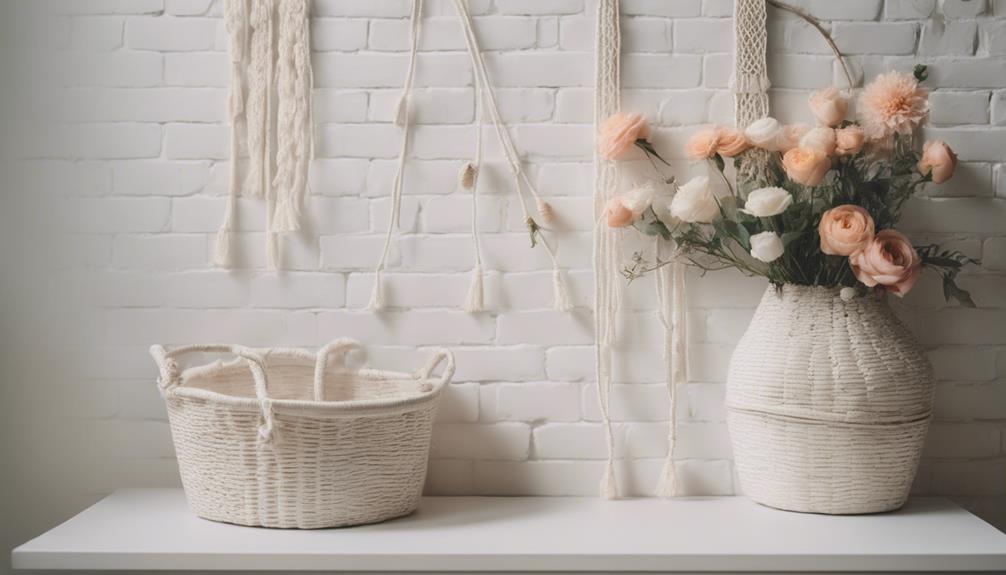
By introducing soft pastel hues into your white brick wall decor, you can create a soothing ambiance that exudes warmth and femininity, a stark contrast to the industrial chic look you've just explored. Soft pastel hues like blush pink, baby blue, and mint green complement white brick walls beautifully, creating a soft and soothing ambiance against the texture of white brick.
When paired with white brick, pastel hues add a touch of femininity and warmth to the space, perfect for a serene and cozy atmosphere. The light and airy feel of white brick walls is enhanced by pastel hues, creating a subtle and elegant contrast in home decor.
As an interior design element, soft pastel hues against white brick walls can elevate your space, making it feel more inviting and relaxing. By incorporating these hues into your white brick wall decor, you'll create a calming oasis that's perfect for unwinding after a long day.
Vintage Decor on White Brick
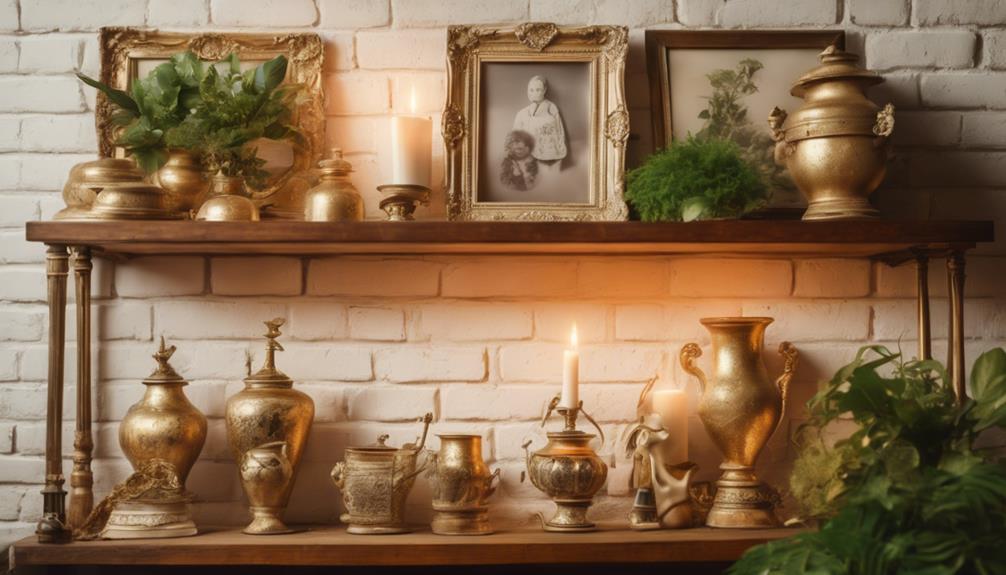
As you explore the world of vintage decor on white brick walls, you'll discover that incorporating unique display pieces can elevate the overall aesthetic.
Consider using distressed frame displays to add a touch of nostalgia, or incorporating rustic wooden accents to bring warmth to the space.
Distressed Frame Displays
Distressed frame displays on white brick walls breathe new life into vintage decor, elevating the space with a charming blend of nostalgia and rustic charm. You can create a unique and personalized display that showcases your cherished memories and art pieces. By incorporating vintage frames, you add a nostalgic and eclectic touch to your white brick wall decor.
Here are some ways to make the most of distressed frame displays:
- Contrasting Beauty: The contrast between distressed frames and white brick walls adds visual interest and depth to the decor.
- Character Enhancement: Incorporating antique frames enhances the character and personality of the white brick backdrop.
- Rustic Charm: Distressed frames on white brick walls create a vintage and rustic charm in the space.
- Personalized Touch: Vintage decor on white brick walls offers a unique and personalized way to showcase cherished memories and art pieces.
Rustic Wooden Accents
You can introduce rustic charm and warmth to your white brick wall decor by incorporating rustic wooden accents, which create a charming contrast against the clean, modern backdrop. By adding reclaimed wood shelves or a distressed wooden coffee table, you'll create a cozy atmosphere that invites relaxation.
To take it a step further, incorporate vintage decor items like a weathered wooden ladder or antique wooden frames, which will add character and warmth to the space.
A mix of white brick walls and rustic wooden accents can evoke a cozy, cottage-like atmosphere in any room. Consider adding a wooden bench with storage baskets or a wooden console table to enhance the rustic charm of the white brick wall decor.
Vintage decor pieces like an old wooden trunk or wooden wall clock can further elevate the aesthetic appeal of a room with white brick walls. By combining these elements, you'll create a unique and inviting space that's perfect for relaxation and conversation.
With rustic wooden accents, you can add warmth and personality to your white brick wall decor, creating a cozy retreat that's all your own.
Faded Floral Patterns
With faded floral patterns, you can infuse your white brick wall decor with a touch of vintage romance, creating a soft, nostalgic atmosphere that's both whimsical and elegant. This unique decor style combines the rustic texture of white brick walls with delicate floral motifs, resulting in a one-of-a-kind look that exudes vintage charm and romantic ambiance.
To achieve this look, you can use:
- Wallpaper: Add a touch of elegance with vintage-inspired floral wallpaper designs that complement your white brick walls.
- Stencils: Use floral stencils to create a subtle, distressed look that adds depth and character to your walls.
- Hand-painted designs: Commission a local artist or try your hand at painting delicate floral patterns directly onto your white brick walls.
- Mix and match: Combine different patterns and designs to create a unique, eclectic look that reflects your personal style.
Greenery and Brick Wall Fusion
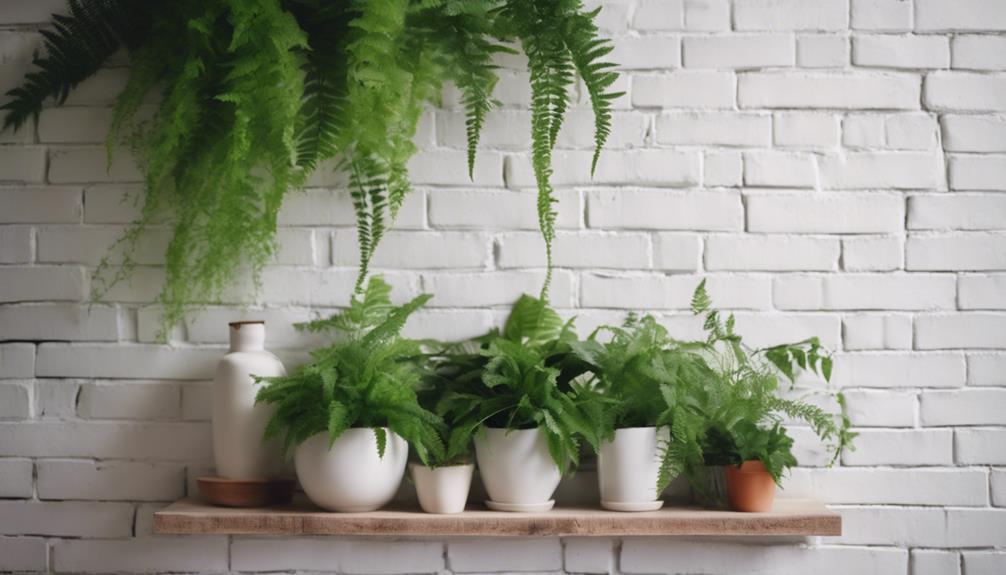
Frequently, incorporating lush greenery against white brick walls can transform a space, adding a fresh and vibrant contrast that revitalizes the entire room.
As you combine greenery with white brick, you'll notice how the natural, organic look enhances the overall aesthetic appeal of your interior wall.
The fusion of greenery and white brick creates a soothing atmosphere, perfect for unwinding after a long day. To take it up a notch, pair your greenery with brown leather accents, which will add warmth and coziness to the space.
The brick accents will subtly complement the greenery, creating a visually appealing contrast. Remember, the key is to strike a balance between the natural and industrial elements.
Bold Color Blocking With Brick
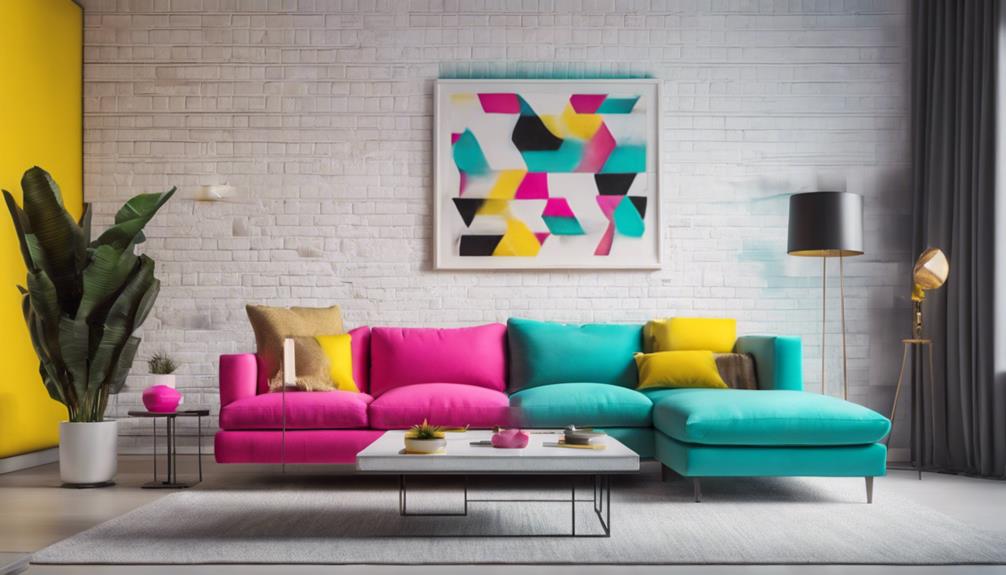
To add a burst of personality to your space, pair your white brick wall with bold, vibrant hues that create a striking contrast and make the wall pop. This bold color blocking technique can elevate your modern home's style and create a statement piece. Here are some tips to get you started:
- Choose bold accent colors: Vibrant hues like teal, mustard yellow, or deep red can create a striking contrast with your white brick wall.
- Incorporate color blocking: Paint sections of the brick wall in different hues to add a modern and artistic touch.
- Opt for complementary furniture: Choose furniture and accessories in colors that complement the bold hues you've chosen to enhance the visual impact.
- Experiment with patterns and textures: Geometric patterns, textures, and shapes can add depth and visual interest to your space.
Frequently Asked Questions
What Looks Good on a White Brick Wall?
What looks good on a white brick wall? You'll be surprised at how versatile this backdrop is!
Bright and colorful decor pops against it, while greenery and brown leather furniture add a bohemian touch.
Artwork and contrasting bedding stand out beautifully, and the texture of the bricks enhances the overall decor style.
You can even create a cozy atmosphere with a few carefully chosen pieces.
Whatever your style, a white brick wall provides the perfect canvas for self-expression.
How Do You Make a Brick Wall Interesting?
You're probably thinking that a brick wall is about as exciting as a plain cracker – until you add some flair.
To make a brick wall interesting, you need to add some visual interest. Think of it like a blank canvas waiting for your artistic touch. Try mixing textures by adding wood or metal accents, or strategically placing lighting fixtures to highlight the wall's natural charm.
With a little creativity, your brick wall can go from bland to grand!
How Do You Dress up a Plain Brick Wall?
You're looking to dress up a plain brick wall, and you're not alone! Many people struggle to make this architectural feature shine.
First, start by adding some visual interest with floating shelves or picture frames to display personal items. You can also incorporate plants or hanging baskets to bring in a natural touch.
Next, consider installing sconces or pendant lights to highlight the brick's texture.
What to Do With an Interior Brick Wall?
When considering what to do with an interior brick wall, you have several options. You can choose to leave it exposed, highlighting its natural texture and charm.
Alternatively, you can paint it white to create a modern and airy aesthetic, serving as a neutral backdrop for various decor styles and color schemes.
Conclusion
As you've seen, styling a white brick wall is all about mixing and matching different elements to create a unique look. Remember, 'variety is the spice of life,' and with these 7 creative ways to style your white brick wall decor, you'll be well on your way to creating a space that's truly one-of-a-kind.
So don't be afraid to experiment, combine styles, and make mistakes – after all, it's all part of the design process. Happy decorating!
